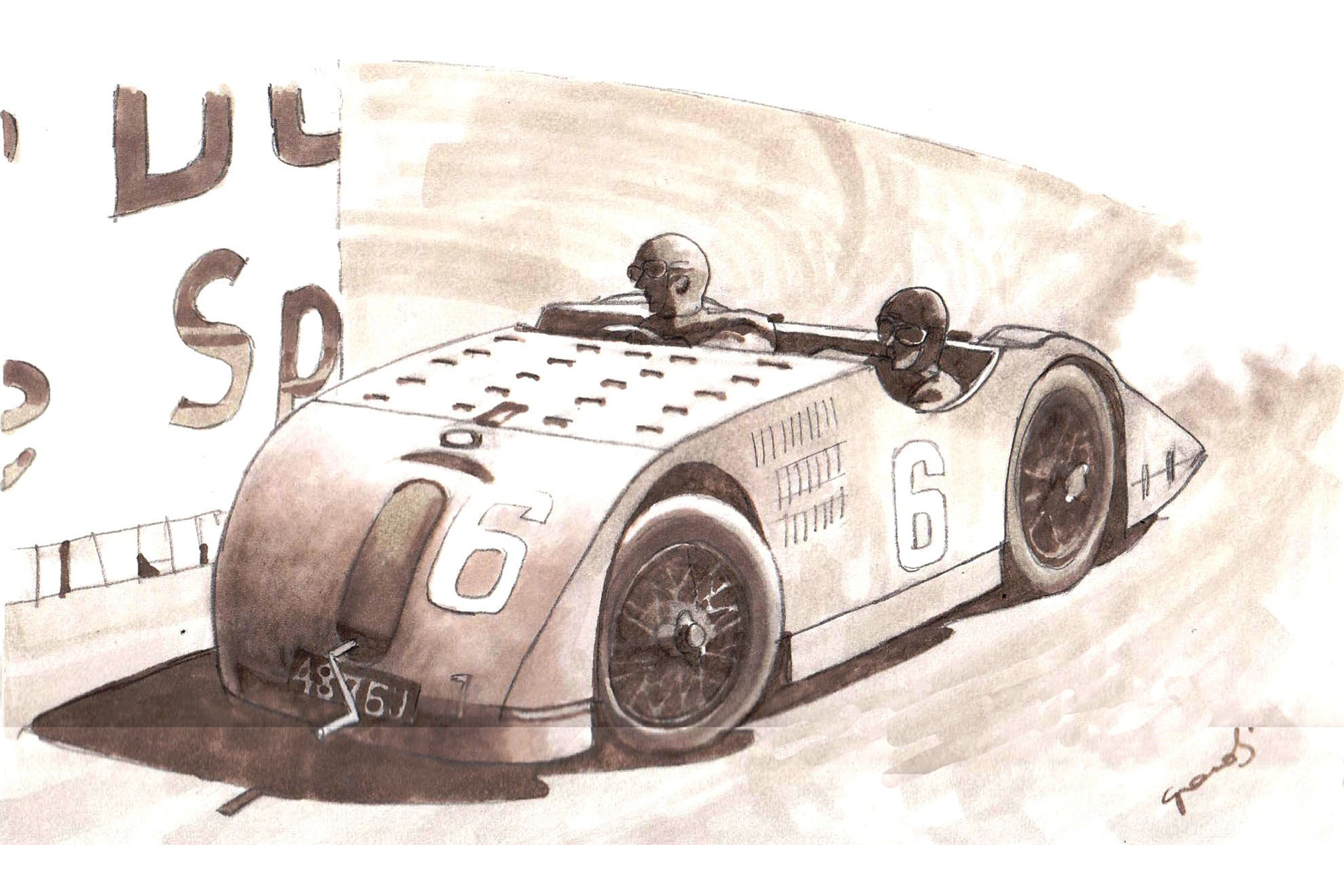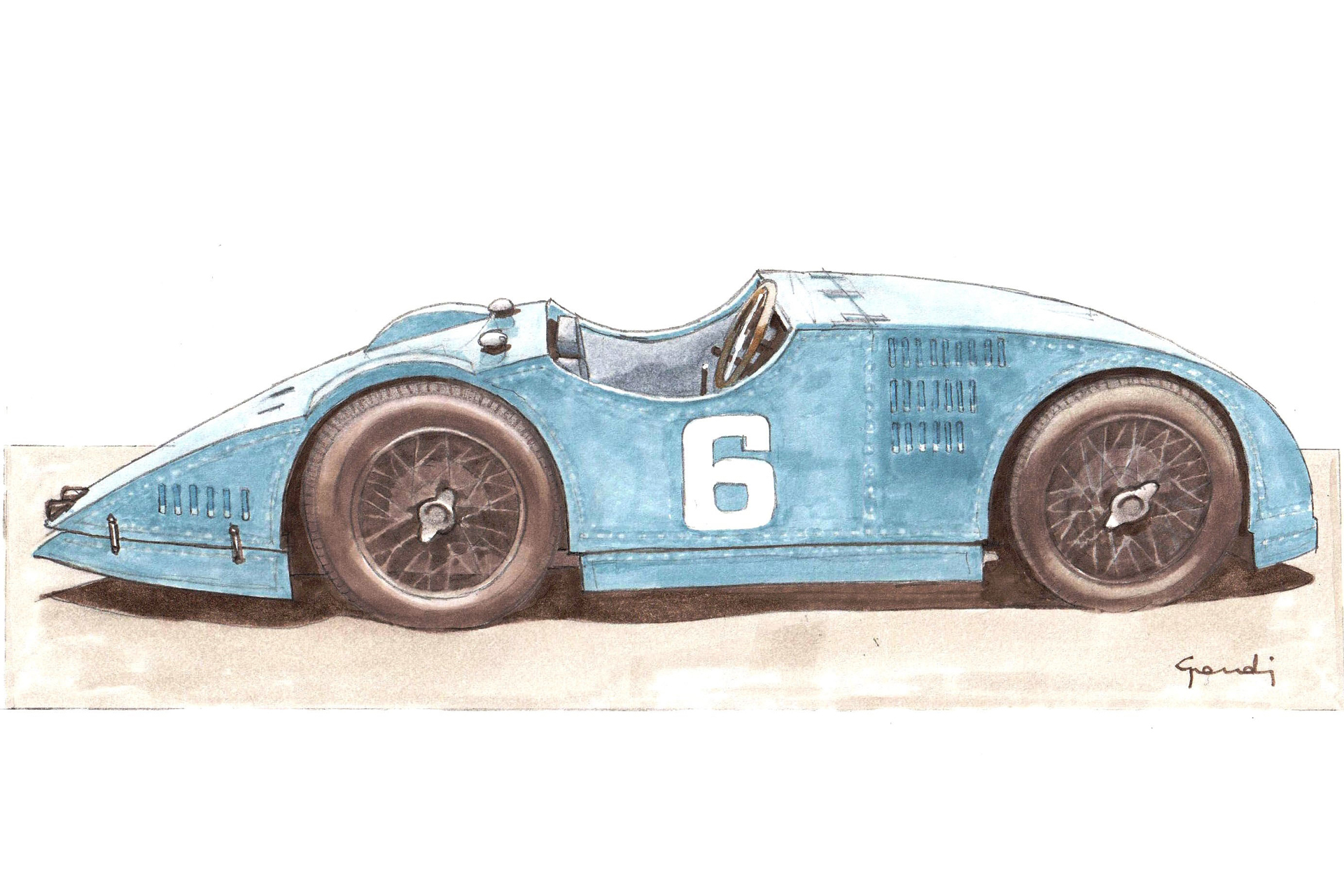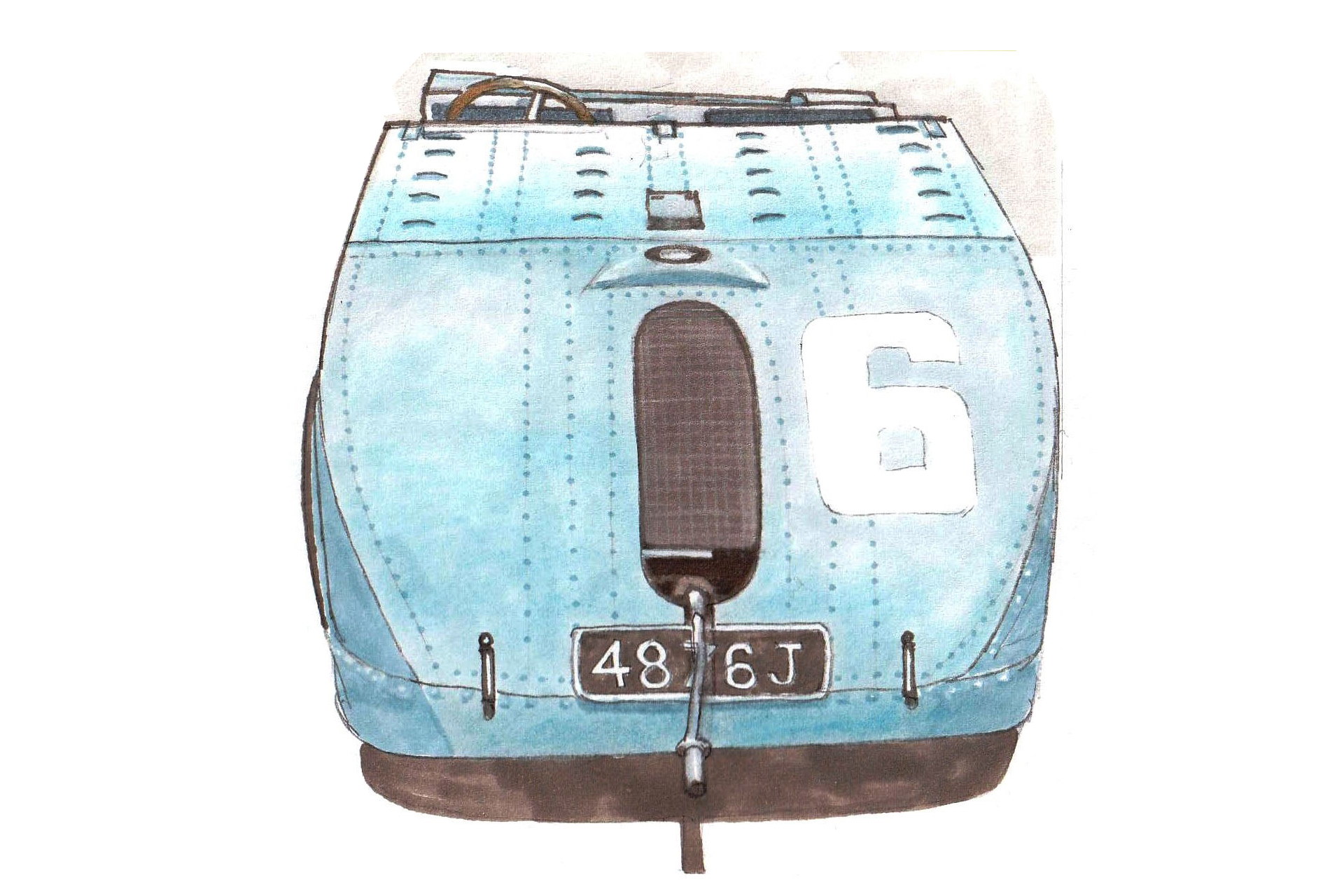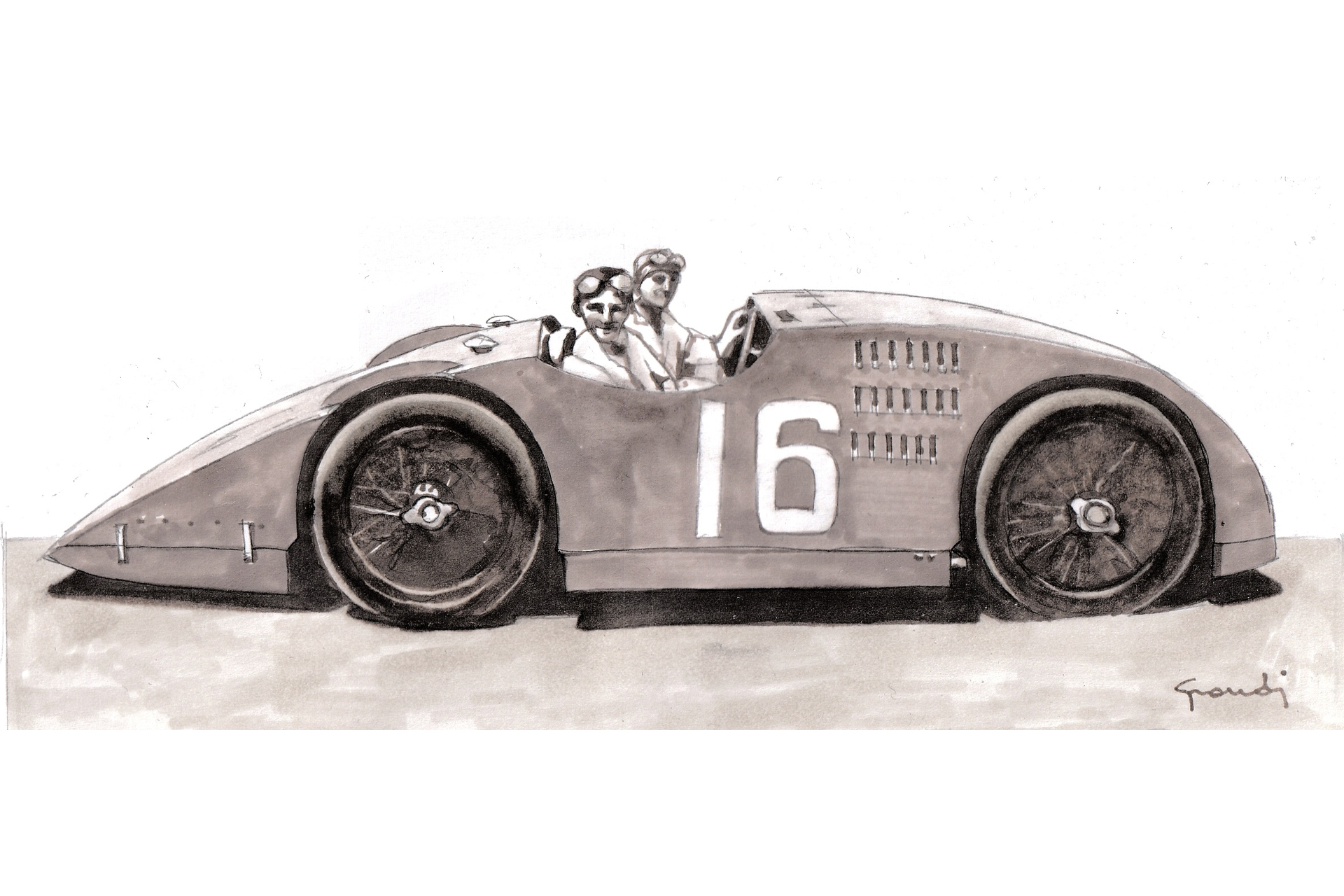1923. The Bugatti Type 32. A racing tank
With the valuable support of Prof. Massimo Grandi’s depth of knowledge and illustrative talent
Photo credit: Some images are taken from the book Asi Service "Quando le disegnava il vento" by Massimo Grandi
The genius of Ettore Bugatti was already well recognized when, in 1923, he entered four Type 32s in the Grand Prix of Tours. Even though his considerable success, dating back to the Type 13, grew with the Type 35, which was to dominate motor racing for years, Bugatti could not resist the temptation to explore the advantages of aerodynamics.

His experiments in this area led to the construction of a rather solid-looking, wing-shaped car with a very short wheelbase. The car was dubbed the “Tank” due to the bolts used to fix the bodywork parts together. However, its powerful two-liter eight-cylinder engine — this was the maximum capacity allowed — was unable to express its full potential as the car, precisely because it was built like a wing, tended to lose adherence to the ground when travelling at speed. It was capable of a remarkable 180 km per hour.

Although it beat the aerodynamic cars fielded by Voisin, it only managed third place. The race was won by the most conventional entrant: the English six-cylinder Sunbeam.

The full fairing solution was subsequently adopted by Jean Bugatti, Ettore’s son, for the Type 57 that won the 24 Hours of Le Mans in 1937. However, this jubilant return was overshadowed by tragedy when, two years later, Jean died at the wheel of the very same car.
